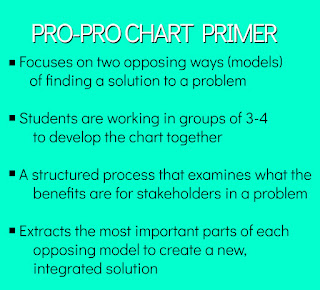Why the heck did I do that?
“Why the heck did I DO that?”
Have you ever found yourself asking that question after teaching a lesson? I did, a week or so ago. I delivered a classic “powerpoint”, with teenager eyes glazing over but I’m powering forward and getting through my slides because “that is the lesson”. Immediately after finishing the period, I realized I messed up. Students had probably retained 5% of the information that I just talked at them about. This stung a little, especially since what I just did flew in the face of my current “WHY” as a teacher.
| One iteration of the creative process we are playing with. |
Let me back up and give you a bit of context. I’m an art and photography teacher and my colleagues and I are really pushing hard to reimagine the creative process.
WHY are we doing this? We are finding that when students’ experiment within the creative process and are not evaluated, they engage more in the risk taking and truly embrace their creativity. Being set up as an experiment, students are taking pictures while genuinely curious about how the shot will turn out, not because the teacher expects something specific to happen. We ask students to take LOTS of photos. With curiosity driven outcomes, not mark driven outcomes; where failure has no real consequences and is only a learning tool to encourage students to try again, our classes have been a lot more free in their willingness to try creative experiments. We are responding to Sir Ken Robinson in our own way and trying to right a wrong.
In photography, we have been working on using a series of active daily shooting challenges to get students out and experimenting. The goal is this: by getting students to experiment and create with cameras in their hand FIRST before we get into the technical specifics of the camera, this will set the stage for students to uncover the curriculum, not the teacher covering the curriculum. The challenges work around an idea or a technique, each day uncovering a different aspect of the topic. I have got to say, these challenges have been going really well; the class gets into a groove, knowing that each day, we will be directing our focus to something different. It is kind of like a Photography Workout of the Day (WOD). These Shooting Challenges aren’t evaluated, so students are given permission to fail. At the end of the week, students select their Photo of the Week, share and post it, and talk about what worked and why. The emphasis each day is on shooting TONS, being encouraged to play, try weird things and to share with each other, with no expectation that “Today is the day you make a good image”. The Photo of the Week is a tool for pause and reflection, to look back at those weird experiments and pull out something interesting.
Which brings me back to me messing up last week. I had just spent the week prior structuring the course to allow for student centred discovery of the material, why did I decide to cap off the learning with some teacher focused “chalk talk”? At the time, I figured that the students needed to know all the specifics, so I had better give it to them. I only realized that I had messed up when I saw those glazed eyes. This was definitely the wrong approach. So I was determined to improve the next week, when we would be tackling a different subject: shutter speed.
The following week, the class started to uncover the next topic in the same way, daily shooting challenges. Lots of fun, lots of experimenting.
To cap off the learning, students again choose their “Photo of the Week”, and instead of me talking at them about the ins and outs of shutter speed, I pulled inspiration from a sketchnote created by Laura Wheeler in a tweet I had seen a day before:
This is amazing! 11 ways to build a thinking ckassroom from research by @pgliljedahl sketchnote by @wheeler_laura pic.twitter.com/nGE0d0amRX— Impact (@ImpactWales) October 23, 2017
I randomized groups by picking playing cards, put up large paper on the walls of the room, and gave students key words for students to group and arrange in a way that made sense to them. Then I floated and watched as the students started to pull together their learning on their own terms. I encouraged them to access the information posted to Google Classroom and to Google Search other terms or techniques they were unsure of. It was great to see students debating and discussing how to lay out their mind map and making connections to their learning in the past week. What they were putting up on their mind map wasn’t always correct, but that was an opportunity to clarify and start a discussion.
What I took away from the last couple weeks in photography class, was that TRY, FAIL, LEARN isn’t just for the students. As teachers, we need to be more comfortable failing, reflecting and sharing. Its great to share our amazing home runs on social media and it is also important to talk about when things DIDN’T go as planned. Let’s open up our classroom, talk to others, share our experiments (failed or successful) with other teachers and let’s start to talk openly about our practice, warts and all, because if we do, we will become more creative and more dynamic in our classrooms and in our schools. So how about you? Can you think of when a lesson, a unit, a project went seriously sideways? How did you pivot and save the lesson, or what did you do differently next time?


Comments
Post a Comment